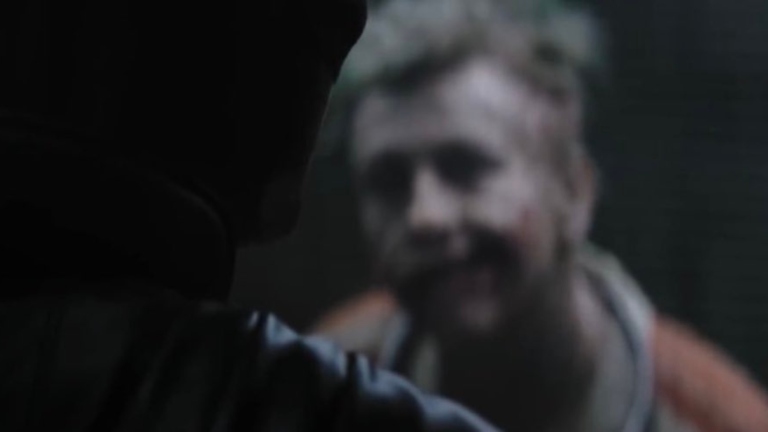The biggest surprise in The Batman has already received a lot of attention. Warner Bros. even let the cat out of the bag early in the movie’s theatrical run when they revealed that director Matt Reeves had actually shot two scenes featuring actor Barry Keoghan’s fresh interpretation of the Joker. But who could blame the director if the second scene had to be trimmed for time? A superhero epic that, while wonderful, isn’t quite as merry or action-packed as other comic book movies Even at that weight, this movie is already just shy of three hours long. The extra scene is quite talk-y and may have dragged down the movie a little bit too much.
However, you’re in luck if you still want to see the scene. In order to give us a better understanding of this Batman’s relationship with the Clown Prince of Crime, WB made the deleted sequence available before the movie debuted on HBO Max. Even while the scene that was used in the film demonstrates that there is a Joker in Reeves’ Gotham, it is this deleted clip that finally indicates that the clown has already had a run-in with the Bat. He was initially imprisoned in Arkham Asylum for what appears to be this reason. In reality, this scenario demonstrates that many of the distinguishing characteristics of their relationship are already present. The villain and hero are destined to revolve around each other inexorably after just five minutes of action. They’re ready to celebrate one of many anniversaries to come, as the Joker says.
Watch the scene for yourself below:
No, you are not seeing things. Batman has asked Joker for assistance. The Dark Knight is following the Riddler’s trail of bodies and letters, and the Caped Crusader is curious as to why. Consulting with other criminals who are just like him is the best way to profile and find a serial killer. But despite the fact that David Fincher’s movies, which heavily influenced The Batman, would have felt right at home in this scene, it actually plays more like the Hannibal Lecter scenes in Michael Mann’s Manhunter and Jonathan Demme’s The Silence of the Lambs, with the Joker playing the role of the crazy doctor who is one step ahead and playing tricks on the detective.
The scene foreshadows many of the events later in the film, including the Riddler’s feelings of camaraderie with Batman and his animosity towards the Wayne family, who may or may not have been accountable for his father’s death decades earlier. In addition, it may be setting up a future showdown between the Bat and the Clown in a potential sequel. (The movie makes a strong suggestion that Edward Nashton, played by Paul Dano, is actually Thomas Elliot, but we never really find out.)
Where precisely does this deleted scene belong in the film, though, given that there just one? How far into Batman’s investigation into the Riddler and Gotham’s most crooked residents does he get before deciding it’s time to meet his archenemy?
Contextual cues indicate that it occurs in the middle of the first act. The Joker refers to the mayor and commissioner as the Riddler’s most recent victims in the scene. Early in the movie, both Mayor Don Mitchell Jr. (Rupert Penry-Jones) and Commissioner Pete Savage (Alex Ferns) pass away. Gil Colson’s (Peter Sarsgaard) death, which has received a lot of attention, isn’t mentioned in the scenario, indicating that it hasn’t happened yet. Since the drug-addicted district attorney of Gotham is later abducted by the Riddler that same night, the scenario must occur before Batman sends Selina Kyle (Zo Kravitz) inside the Iceberg Lounge to spy on him. The following day, Riddler attaches a bomb to Colson’s chest before detonating it inside a church. If it had already occurred, the Joker would have surely acknowledged it! He could have even passed out from laughter.
Now that that riddle has been cleared up, the great issue that still needs to be answered is: what do these two Joker sequences portend for the villain’s future in Reeves and Pattinson’s Gotham?
Before the movie’s release, Reeves told us that he wasn’t sure if the Joker will appear in further films because of the context of his appearance at the conclusion. “I can’t say for sure whether or not we would portray him explicitly in the movies. But if we do, I have an entire narrative of how he got started and what it was all about.
During our discussion, Reeves provided us a peek into that past, saying how the Joker’s portrayal in this Elephant Man-inspired film is greatly influenced by his physical flaws, which have helped to mould him into the person he is today.
I adore David Lynch, Reeves declared. “What if the fact that life had pulled this terrible trick on him had shaped this guy’s entire worldview? He was made fun of by life, and he was unable to stop laughing. For the rest of his life, people would gawk at his uncontrollably hideous smile. Thus, this would represent [Joker’s] nihilistic worldview as opposed to being like the tale of The Elephant Man, where all of his ugly exterior belied the lovely within. Everything was viewed through the lens of fate playing a cruel joke on you since childhood because of his kind of sneaky insight of human nature. So that’s sort of where the psychology, in terms of who this guy would be, comes from.
That surely offers a unique perspective on the Clown Prince of Crime. Who knows, perhaps we will see more of it in the future. The Batman is currently available in cinemas and on HBO Max.

